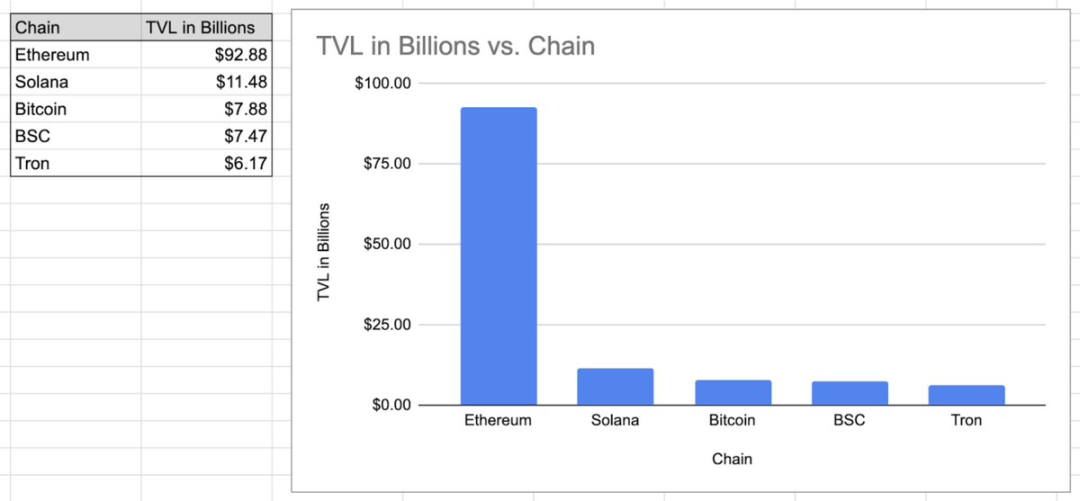The future trend is: perpetual contracts (and all "killer applications") will make leading general-purpose chains even stronger.
Written by: World Capital Markets
Translated by: Saoirse, Foresight News
The debate between application chains (Appchains) and general-purpose chains (GP Chains) has never ceased. Both models have their advantages, but when we examine the rationale for building perpetual contracts on general-purpose chains from a historical and economic perspective, it becomes self-evident.
In fact, the idea that applications should build their own independent chains is completely misguided. Truly high-quality applications should support general-purpose chains rather than splitting into isolated "information islands."
The essence of finance is integration, not dispersion
The development pattern of the financial industry has never been decentralization, but continuous integration.
In 1921, there were about 30,000 banks in the United States; today, that number has dwindled to about 4,300, a decrease of 86%. Why has this change occurred? The answer lies in shared infrastructure, unified standards, and efficient settlement mechanisms. The fewer the infrastructures, the stronger the liquidity, and the more pronounced the economies of scale.
Although a new batch of blockchain projects emerges every year, even with various alternatives springing up like a "Cambrian explosion," Ethereum, a blockchain known for its slow speed and high costs, still ranks first in total value locked (TVL) and maintains a significant lead: its scale is nearly 10 times that of Solana.
Here are the top five blockchains by total value locked as of August 31, 2025:

Data source: https://defillama.com/chain/ethereum
After Ethereum, the rankings are still dominated by general-purpose chains. Eventually, you will see HyperEVM—another general-purpose chain that supports the operation of Hyperliquid; and Hyperliquid is, so far, the only truly successful application chain.
This shows that shared settlement is the ultimate direction of blockchain finance, rather than decentralized "specific application islands."
Distribution is key: the "winning factor" in finance
There is a common saying that "general-purpose chains only solve the distribution problem." "Only" solve it? This statement is akin to saying "a drug only cures cancer." In the financial sector, distribution itself is the core competitive advantage.
How significant are the differences in financial products you use daily among different service providers?
From checking accounts to comparisons between the New York Stock Exchange (NYSE) and Nasdaq, aside from "distribution capability" and "established network effects," I find it hard to identify any essential differences among these businesses. It is important to note that hardware costs, such as servers, are low, but distribution capability is priceless.
Platform economics: a true revelation
Platforms are highly influential distribution vehicles.
Looking back at the history of platform development—from operating systems, app stores, Xbox gaming consoles, to the internet, and more recently, Telegram—the pattern is remarkably clear: those groundbreaking applications, whether by active choice or passive adaptation, will support the platform rather than develop independently away from it.
Consider the importance of distribution to platforms: how many applications on your iPhone are downloaded without going through the App Store? How many times have you accessed a website without using a browser? TikTok did not create a better operating system, Facebook did not develop a better browser, and Halo did not manufacture a better Xbox console.
In fact, contrary to some current viewpoints: high-quality applications are motivated to support the development of the platform.
Popular applications want the platform to succeed, creating a "flywheel effect": applications bring traffic, traffic attracts more applications, leading to even more traffic.
Blockchain, through decentralized governance, addresses the unique core drawback of traditional platforms—"platform risk" (i.e., the platform may unilaterally change rules, restrict applications, etc.). On decentralized platforms, situations like the decline of FarmVille due to changes in platform rules will no longer occur. You can enjoy all the advantages of the platform without bearing the risk of being "exploited by the platform." Of course, it should be noted that due to the inherent trade-off between "performance" and "decentralization" in current technology, MegaETH still has certain centralized attributes; but what matters is the ultimate goal, not the initial state.
Conclusion: Network effects drive "winner takes all"
The financial industry is continuously integrating, with platforms dominating distribution, and distribution capability being more important than product functionality.
The only distinction between blockchain and historical patterns is that it will further amplify these effects.
The future trend is: perpetual contracts (and all "killer applications") will make leading general-purpose chains even stronger. Because network effects do not disperse; they only accumulate and continuously strengthen.
免责声明:本文章仅代表作者个人观点,不代表本平台的立场和观点。本文章仅供信息分享,不构成对任何人的任何投资建议。用户与作者之间的任何争议,与本平台无关。如网页中刊载的文章或图片涉及侵权,请提供相关的权利证明和身份证明发送邮件到support@aicoin.com,本平台相关工作人员将会进行核查。




